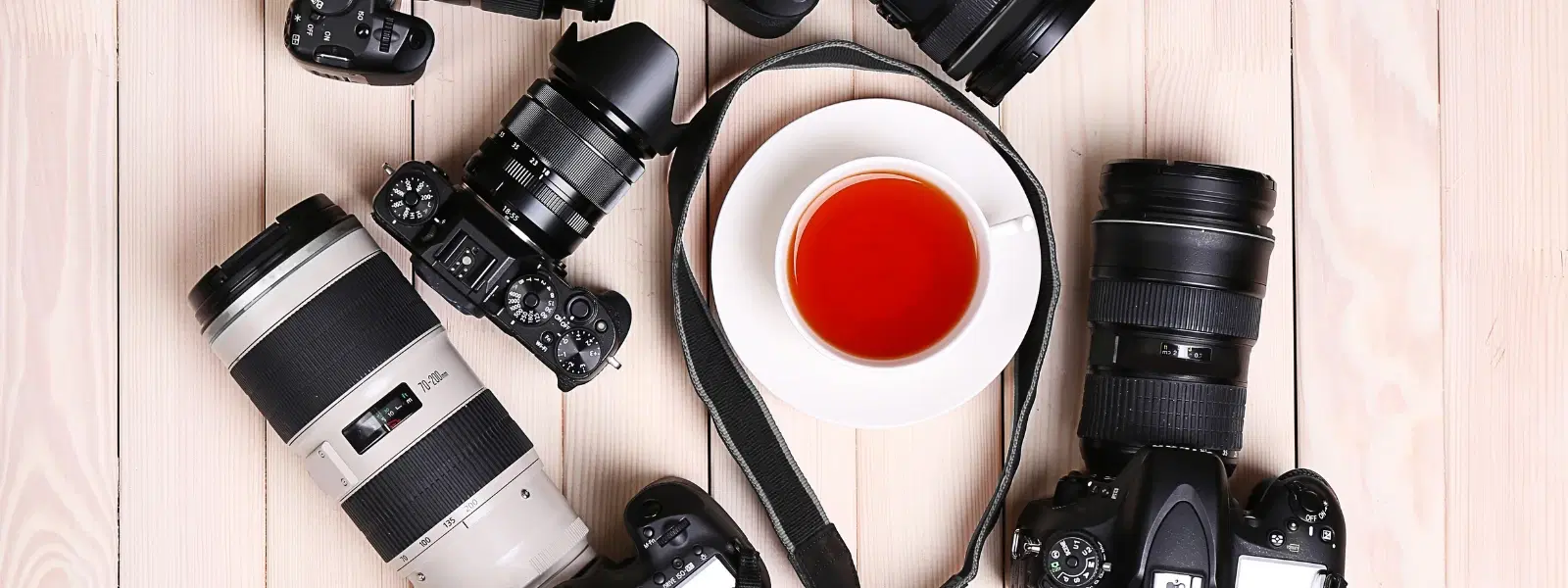
Consumer Electronics
•04 min read
Wildlife photography demands more than just skill—it requires the right gear to capture nature’s fleeting moments with precision and clarity. With a digital slr camera with telephoto lens in hand, photographers can transform distant wildlife into vivid, close-up portraits that highlight nature's intricate details. Earn up to 5% NeuCoins on every purchase and enjoy Express Delivery for orders placed before 6pm when you shop through Tata Neu. This guide lays out a comprehensive checklist for anyone passionate about elevating their DSLR camera for wildlife photography experience.
A DSLR camera for wildlife photography stands out for its superior image quality, fast autofocus capabilities, and robust durability. For those looking to capture the spontaneity of nature, a professional DSLR with telephoto lens is the smart choice. The advanced sensor performance and responsiveness allow photographers to capture fleeting moments, ensuring every shot is packed with life and detail. According to recent photography trends, fast autofocus and high sensor performance are essential features for wildlife enthusiasts.
An ideal DSLR for zoom photography should feature high ISO performance to handle low-light conditions under the canopy of forests or at dusk. Fast shutter speeds freeze the motion of animals in action, while weather-sealing protects your gear during unpredictable weather. These elements combine to create a resilient tool, perfect for challenging outdoor sessions that demand versatility and reliability.
Telephoto lenses for DSLR cameras allow you to zoom in on far-off subjects, making them indispensable for capturing the minute details of wildlife from a safe distance. A long-range lens for DSLR use guarantees that you can capture dynamic scenes without disturbing nature, ensuring both the comfort of the animal and the clarity of your image.
When selecting a telephoto lens, consider the focal length, aperture, and your budget. Options range from versatile zoom lenses like the 55-250mm to more specialized models such as a 600mm lens, which offer different benefits depending on your shooting style. Although some may wonder what is the disadvantage of a telephoto lens, it is important to note that while they offer remarkable reach, they can be bulkier and may need additional support. Wise selection of a digital slr camera with telephoto lens can overcome these challenges.
Effective use of your telephoto lens requires strategic planning and practical tips. Stabilise your camera with a reliable tripod or consider a monopod for greater mobility. Adjust the focus carefully to account for swift movements of wildlife, and always check your settings before initiating long shooting sessions. These telephoto photography tips ensure that even fast-moving subjects are captured with clarity and precision, turning every shot into a work of art.
Pro Tip: Mastering Telephoto Photography
Did you know that using a monopod instead of a tripod with a telephoto lens can give you greater mobility while maintaining stability? This approach is especially helpful when tracking fast-moving wildlife and ensures you are always ready to capture that perfect shot.
Beyond your core camera and lens, a few supporting accessories can make all the difference. Sturdy tripods and monopods provide the stability needed for long telephoto shots, while lens hoods help combat flare and unwanted light. A comfortable camera strap enhances mobility during extended shoots, allowing you to roam further into the wild with confidence.
High-speed memory cards are essential to handle rapid shooting sequences, while extra batteries ensure you never miss a shot during those long days in nature. By investing in quality memory cards and spare batteries, you are prepared for uninterrupted shooting sessions – a must for capturing the unpredictable moments that define wildlife photography.
Protecting your investment is crucial when out in rugged nature. Durable camera bags designed to withstand rough terrain, combined with rain covers, safeguard your equipment against harsh weather conditions. This protection not only prolongs the life of your gear but also allows you to focus on capturing stunning images.
One of the core strengths of DSLR cameras with interchangeable lenses is the ability to adapt to various scenarios. Whether you're capturing wildlife in the wild or switching to a setting that demands a high zoom DSLR camera for sports photography, versatility is key. This flexibility ensures that your investment continues to deliver value across multiple genres of photography.
The same digital camera with zoom lens that excels in wildlife photography can also serve other interests such as sports, macro, and even everyday photography. The ability to adapt makes a DSLR with interchangeable lenses a favourite among enthusiasts who crave a tool that grows with their skills and evolving interests.
DSLR cameras are generally better due to their advanced features, faster performance, and ability to preview shots on a digital screen.
Yes, many SLR lenses can be used on DSLR cameras with the appropriate adapter, but compatibility depends on the camera and lens model.
Telephoto lenses can be heavy, expensive, and challenging to stabilise without proper support like tripods or monopods.
A telephoto camera in a mobile phone uses a lens with a longer focal length to zoom in on distant subjects without losing image quality.
The best combination depends on your needs, but popular options include models that perform well with lenses such as the 70-200mm or 600mm telephoto options.
Choosing the right gear is essential when your passion lies in capturing the beauty of wildlife. From selecting a powerful DSLR camera for wildlife photography that delivers fast autofocus and durability, to opting for a telephoto lens that brings distant subjects into clear focus, every component of your kit plays a role in your creative journey. Don't overlook the importance of accessories like tripods, high-speed memory cards, and protective gear, which further enhance the overall shooting experience. With careful consideration and the right equipment on hand, you can be well-prepared to showcase nature’s wonders in all their glory. Explore Tata Neu’s trusted offerings to earn NeuCoins, enjoy Express Delivery, and discover a world of benefits that make your photography journey even more rewarding.